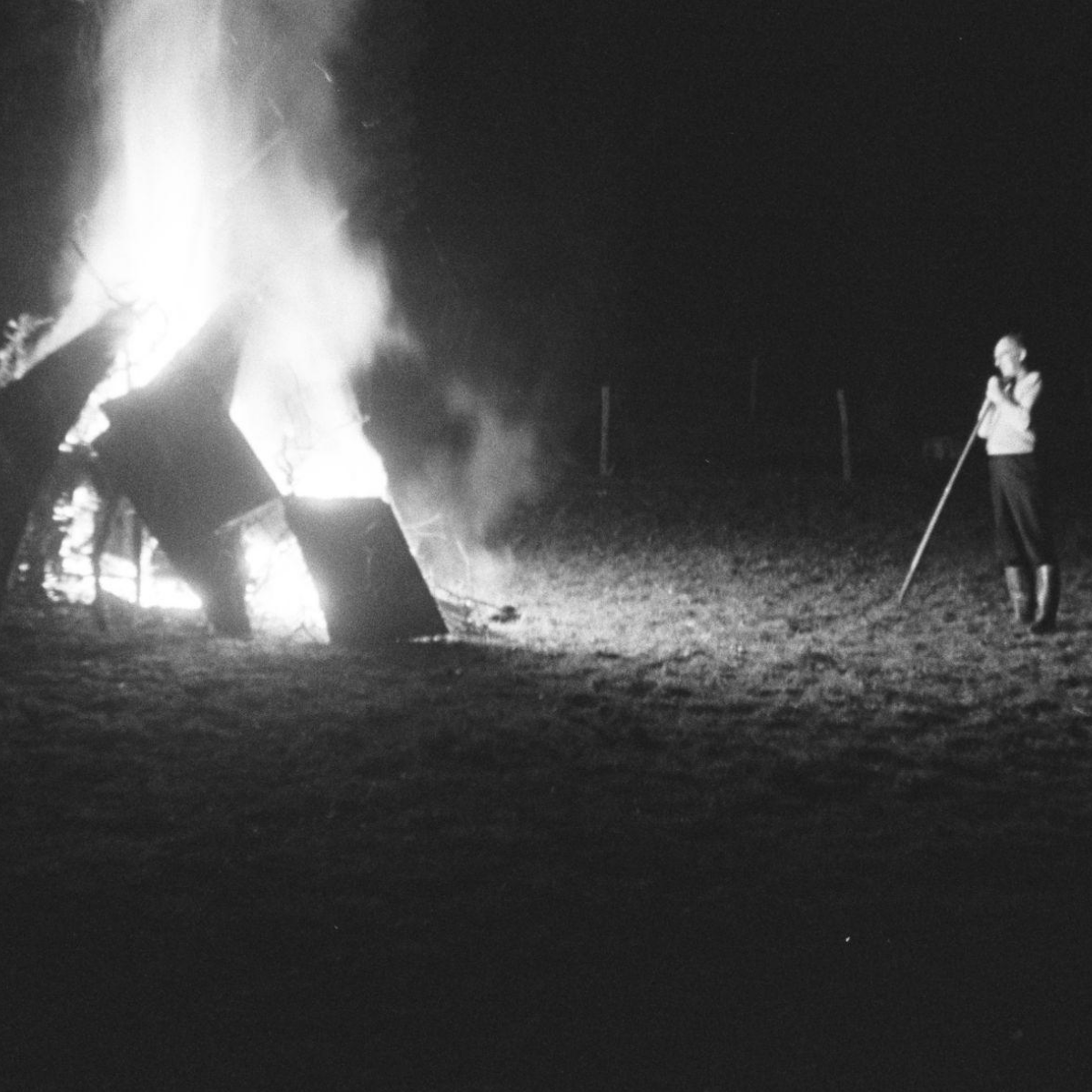This is the time of year when many people (including my family) start preparing for Halloween. Our daughter is currently deciding on her costume and making plans with friends. And soon we will decorate the house and buy candy to pass out to trick-or-treaters when they knock on the door the evening of October 31.
But in the Welsh calendar, October 31 is known as Nos Galan Gaeaf (Winter’s Eve, but also All Hallows’ Eve or Hallowe’en). Nos Galan Gaeaf was once celebrated throughout Wales. As a boundary between seasons, it signaled the end of summer and ushered in the beginning of winter. And while it included traditional customs, food, and games, it was also considered to be a night of ghosts, spirits, and bogies.
I won’t get too into the weeds about the origins of Nos Galan Gaeaf, as there seems to be some uncertainty about it. In “Nos Galan Gaeaf: the traditional Welsh celebration being eclipsed by modern Halloween,” Simon Rodway explains that while there are medieval references to Nos Galan Gaeaf, it is only through modern writings that we have descriptions of Nos Galan Gaeaf customs.
Rodway also notes that “Gaelic-speaking places (Ireland, Gaelic Scotland and the Isle of Man) celebrated, at this time, a festival called Samhain.” Yet he states that “… while Welsh is also a Celtic language, there is no evidence for Samhain having been celebrated in Wales – so, it [Samhain] could well be a Gaelic rather than a Celtic institution.”
In light of this, we’ll explore some of the beliefs and traditions of Nos Galan Gaeaf without trying to pin down how or why they originated. Let’s begin with … ghosts and bogies!
Ghosts and Bogies on Stiles
As I mentioned above, Nos Galan Gaeaf served as a seasonal boundary between summer and winter. Boundaries often hold significance when looking at them through a folkloric lens. Whether it be a physical boundary like a stile between fields or more of a transition, as in from day to night or from one season to the next, boundaries represent a space where the supernatural could enter into our existence.
Delyth Badder and Mark Norman note in The Folklore of Wales: Ghosts that Nos Galan Gaeaf was considered a particularly excellent night for spotting ghosts. It was an evening when bogies, ghosts, and spirits perched on stiles, ready to frighten folks passing by. Badder and Norman explain that bogies on stiles were even found in nursery rhymes, and they give the following example:
Mae heno’n nos Glangaea’, A bwci ar bob camfaTonight is Hallowe’en, with a bogey on every stile

Nursery rhymes like this may have served a purpose in scaring children into respecting their parents’ wishes, like not going out of the house alone on Nos Galan Gaeaf. But ghosts and bogies were not the only fright you might have come across that night. Indeed there were two other specific, folkloric apparitions that were associated with Nos Galan Gaeaf: the Hwch Ddu Gwta (Tailless Black Sow) and the Ladi Wen (White Lady).
The Hwch Ddu Gwta (Tailless Black Sow) and the Ladi Wen (White Lady)
The Hwch Ddu Gwta (Tailless Black Sow) was a folkloric creature found mainly in the traditions of North Wales. Badder and Norman describe her as “a devil in the form of a black pig.” She induced fear not only in children, but in adults as well on Nos Galan Gaeaf. And apparently in Caergybi (Holyhead), there existed a variation of the Hwch Ddu Gwta which had “a tongue of flames.”
In Celtic Folklore: Welsh and Manx, John Rhŷs includes a rhyme of the Hwch Ddu Gwta:
Hwch ddu gwta Ar bob camfa Yn nyddu a chardio Bob nos Gʻlangaea’. A cutty [tailless] black sow On every stile, Spinning and carding Every Allhallows’ Eve [Nos Galan Gaeaf].
I find this juxtaposition of the frightening Hwch Ddu Gwta engaged in everyday activities, like spinning and carding, to be fascinating. It reminds me of a horror movie villain, who goes about their day running errands or performing daily tasks, but at night is running amok.
Another apparition often seen in Wales around Nos Galan Gaeaf was the Ladi Wen (White Lady). There are a great many stories of the Ladi Wen as she was commonly seen in Britain and Ireland throughout the year, but we’ll only look briefly at this Welsh, Nos Galan Gaeaf version. She, too, has a rhyme about her, which Badder and Norman cite:
Nos Glangaea’, twco ‘fala’, Pwy sy’n dod ma’s i chwara’? Ladi wen ar ben y pren Yn naddu coes ymbrelo. Hallowe’en, bobbing for apples, who’s coming out to play? A Ladi wen atop the tree, whittling an umbrella handle.
Apparently, while the Ladi Wen was perceived to be a ghost or bogie, Badder and Norman explain that she was often depicted as “a peaceful and serene spirit unless provoked or annoyed.” In their book they include a description of her from Thomas Christopher Evans’ (Cadrawd) essay, “The Folklore of Glamorgan”:
The Ladi Wen or White Lady, was a gentle, silent, melancholy sort of spectre, generally haunting some lonely spot, a field, a style, a cross road; and in no way to be dreaded, poor creature! Her appearance was always sudden—a bright vision, clothed in white, with glossy coal-black locks hanging over her shoulders, with a pale and care-worn face, and having an expression of intense pain.
In some tales of the Ladi Wen, the spectre is linked to a particular place in the landscape. In others, the apparition is associated with buried treasure.
Some Nos Galan Gaeaf Traditions: Bonfires and Stwmp Naw Rhyw (Mash of Nine Sorts)
One of the oldest traditions of Nos Galan Gaeaf was the lighting of bonfires at night. In his book, John Rhŷs includes a description of how the traditional bonfire could also incorporate in a fortune-telling aspect as well as the Hwch Ddu Gwta. Rhŷs writes:
Besides fuel, each person present used to throw into the fire a small stone, with a mark whereby he should know it again. If he succeeded in finding the stone on the morrow, the year would be a lucky one for him, but the contrary if he failed to recover it. Those who assisted at the making of the bonfire watched until the flames were out, and then somebody would raise the usual cry, when each ran away for his life, lest he should be found last. This cry, which is a sort of equivalent, well known over Carnarvonshire, of the English saying, ‘The devil take the hindmost,’ was in the Welsh of that county—
Yr hwch ddu gwta A gipio’r ola’;that is to say, ‘May the black sow without a tail seize the hindmost.’

According to Simon Rodway, the fires were a form of protection. In his article he explains: “Close to the fires, people would be safe from wandering spirits, but the return home could be a fraught business.” He’s alluding, of course, to the Hwch Ddu Gwta and the Ladi Wen, who might be lurking somewhere in the dark night.
Another tradition that served multiple purposes was a food dish called stwmp naw rhyw (mash of nine sorts). In Welsh Folk Customs, Trefor M. Owen lists the nine ingredients: “potatoes, carrots, turnips, peas, parsnips, leeks, pepper, salt, and a sufficient quantity of new milk to make it of the proper consistency.” It sounds tasty to me—like a jazzed up version of mashed potatoes.
But eating stwmp naw rhyw wasn’t its only purpose. It also formed the basis of a divination game. Owen explains that after the mash was made, a wedding ring would be hidden within it. It was said that whoever found the ring in their portion of the mash would be the next to be married.
Fortune-telling games and divination practices were commonly found in the traditions surrounding Nos Galan Gaeaf. So I thought it’d be fun to take a look at a few more of them.
Divination on Nos Galan Gaeaf
In addition to the wedding ring in the mash tradition, Trefor M. Owen also mentions another food-related form of fortune-telling performed on Nos Galan Gaeaf. While folks used apples to play different games, like bobbing for apples, they also used them for divination.

After carefully peeling an apple without cracking the skin, the curious person would toss the apple skin over their shoulder. Owen explains that the shape of the skin would be examined, and “… it was thought that the letter of the alphabet which it most resembled would be the initial letter of one’s future partner in marriage.”
Another form of divination involved placing different types of substances in three basins. Owen describes how in the Llandysul area, three bowls would be filled: “… one vessel would contain soil, another water containing sediment (dŵr trwbwl), and the third clean water.” The person wanting to know their future would be blindfolded and instructed to place their hands into one of the bowls.
Matching the order of the bowls presented above, Owen lists what the fortune would be depending on which bowl the participant touched: “The first signified death before marriage, the second marriage followed by much trouble, and the third success throughout one’s life.”
I came across several variations on this divination practice. Trefor M. Owen offers a second version of the custom, explaining that if the bowls held “clean water, dirty water and nothing, respectively,” then the “first foretold widowhood, the second marriage, and the third bachelorhood or spinsterhood.”
And in Welsh Folk-Lore: A Collection of the Folk-Tales and Legends of North Wales, Elias Owen presents a slightly different preparation and interpretation of this fortune-telling practice. The bowls would be set up with the first containing clear spring water, the second muddy water, and the third empty. Then a young lady wearing a blindfold would touch one of the basins. Elias Owen gives the interpretation in the following way:
She who placed her hand on the clear spring water was to marry a bachelor, whilst the one who touched the basin with muddy water was to wed a widower, and should the empty basin be touched it foretold that for that person a life of single blessedness was in store.
In researching for this post, I discovered that Nos Galan Gaeaf was a night of superstition and divination, especially surrounding marriage and death. Trefor M. Owen suggests that because this night of the year was filled with the supernatural, it made sense to believe that these spirits might aid in foretelling the future.
As ever, thank you for reading my blog. If you know someone fascinated by folklore, feel free to share this post with them.
Photo credit (featured image): Bonfire Night by Geoff Charles, via Wikimedia Commons (image uploaded as part of a collaboration with The National Library of Wales), licensed under CC BY-SA 4.0, cropped




